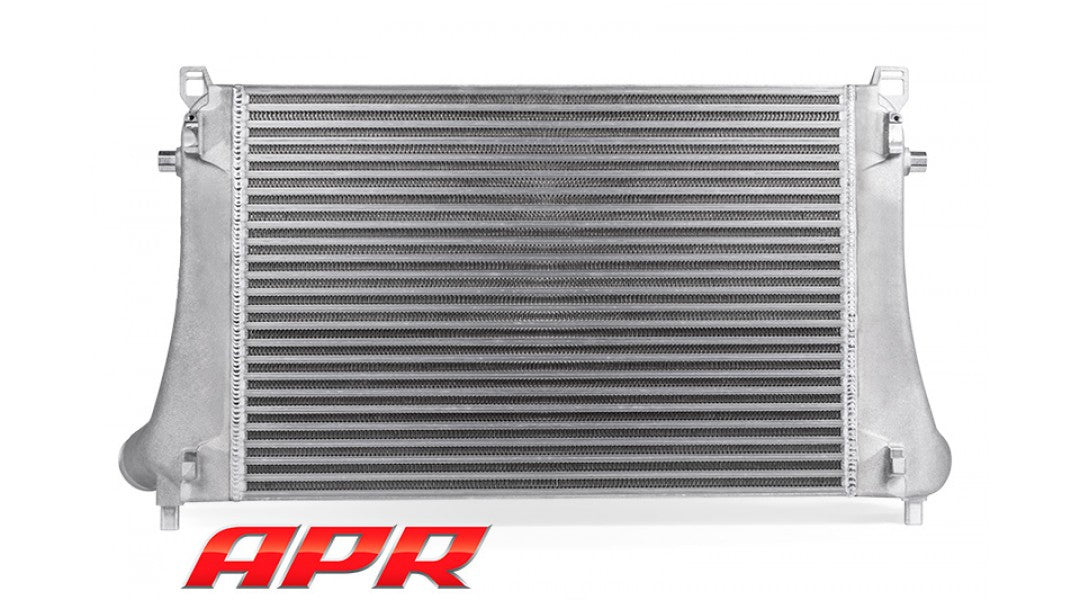
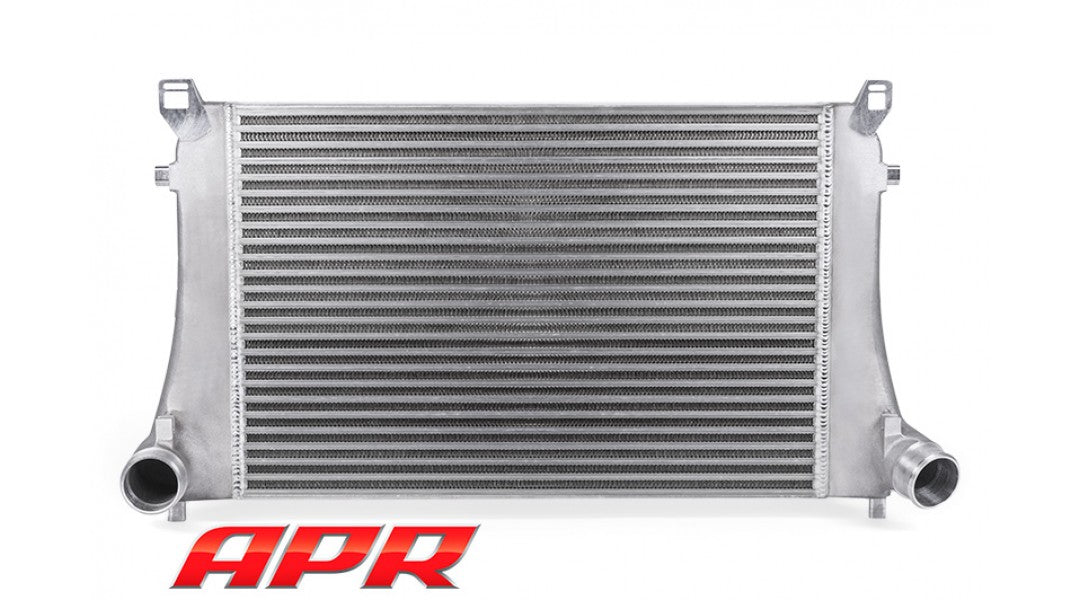
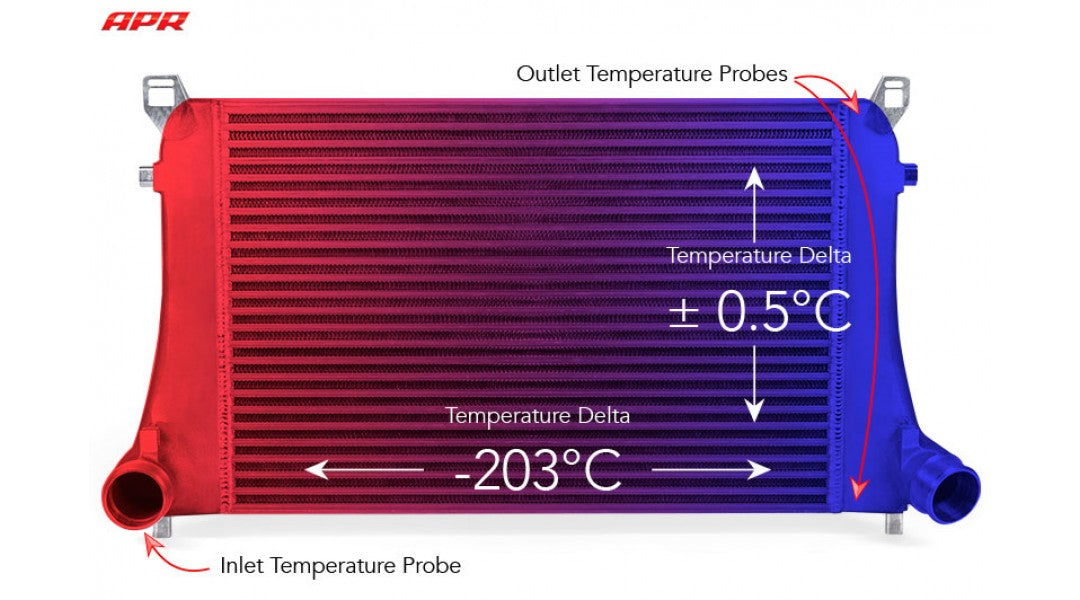
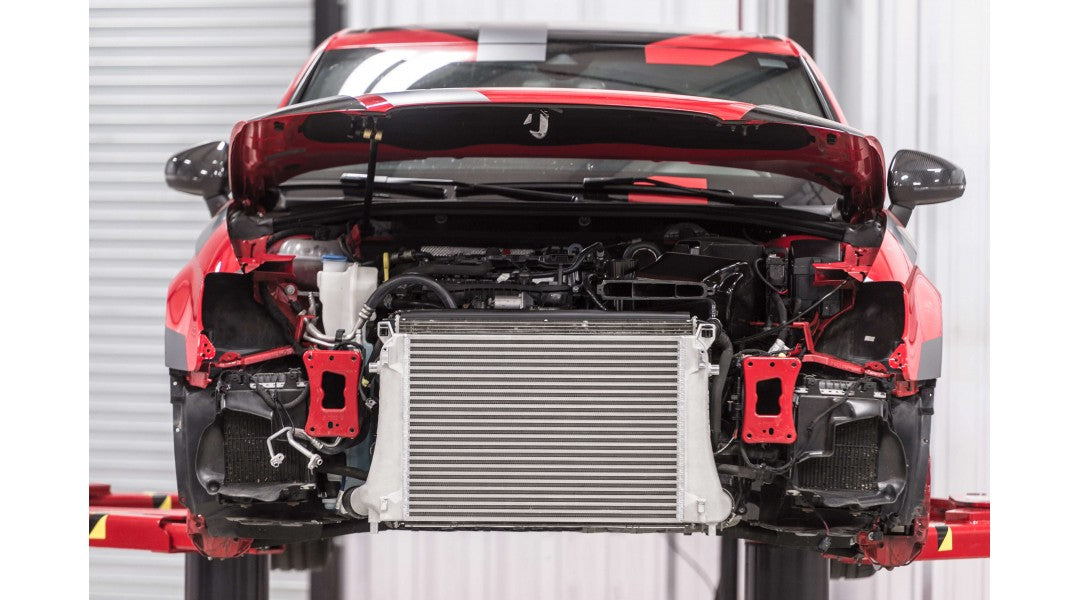
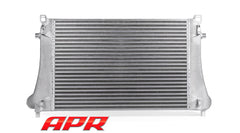
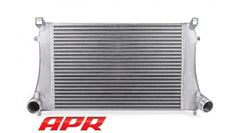
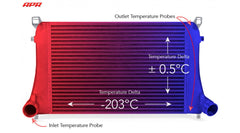
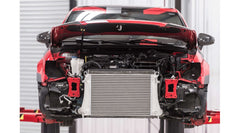
APR 1.8T/2.0T INTERCOOLER SYSTEM FOR MQB PLATFORM VEHICLES
Shipping
Estimated to be delivered in 7 to 21 Days
- Rs. 125,000.00
- Rs. 125,000.00
- Unit price
- per
Couldn't load pickup availability
The APR Intercooler System is an OEM-location upgrade that dramatically reduces intake air temperature (IAT), minimizes heat soak, and provides increased performance! The system is a direct bolt-on upgrade that requires no trimming and is recommended at every stage of performance.
Quick Facts:
- Dramatically lowers intake air temp (IAT)
Increases horsepower while minimizing power-robbing heat soak!
Effectiveness tested to over 500 HP!
21 horsepower gain over the factory system!
- Massive core size
Use of the OEM-location allows for a massive intercooler core.
24.25” x 16.25” x 1.25” – 492.5 in³ – OEM GTI
24.25” x 16.25” x 1.37” – 541.8 in³ – OEM Golf R
24.00” x 16.25” x 2.25” – 877.5 in³ – APR
- Intercooler installed in the best location for this platform
Utilizes factory air dams for exceptional airflow across the core.
100% compatible with the Adaptive Cruise Control (ACC) system.
- Highly effective core design
Bar-and-plate core with staggered and louvered fins.
Rigorous testing determined core style, fin density, and size.
Low pressure drop + highly effective cooling = high performance!
- Smooth cast end tanks
Engineered for low turbulence/restriction and maximum flow.
Organically shaped to promote airflow across entire core.
Pressure tested to prevent power robbing boost leaks.
- No Major or Permanent modifications
No trimming, cutting, or other costly modification required.
No modification to the Adaptive Cruise Control System required.
Full directions and APR world-renowned customer support included.
Intercooler Core Design
The APR Intercooler core is a large bar-and-plate design featuring densely packed staggered and louvered fins. This design offers exceptional cooling while balancing pressure loss across the core, and maintaining critical airflow to the components behind the intercooler system. The core size was appropriately matched to the platform, minimizing pressure drop while leaving adequate space for appropriately designed end tanks. To APR’s mechanical engineering experts, the design represented the ultimate in performance, far exceeding the capabilities of the factory intercooler. To the driver, the result is simple: Repeatable performance, even in the most demanding of situations!
Core Style / Internal Fin Structure:
APR’s Engineers paid close attention to the balance between core effectiveness and pressure drop through the core, core style and fin density. With fin density too low, pressure drop decreases dramatically, but typically results in a core incapable of effectively cooling. Likewise, with fin density too great, pressure drop increases dramatically, resulting in the turbocharger working harder, and hotter, to produce the same level of airflow. By fine tuning this often unseen balancing act, APR’s Engineers were able to maximize performance.
Testing
Internally APR conducted a multitude of tests while choosing the appropriate intercooler core and end tank design. Thermocouples were placed at the top and bottom of the core to measure cooling effectiveness and cooling distribution across the entire unit. Pressure transducers were placed at the inlet and outlet of the intercooler to determine pressure loss across the various units. With this information, APR’s engineers specified the appropriate intercooler core type, dimensions, cooling fin density and made the necessary design changes to the end tanks to ensure full utilization of the entire core.
The end result was development of a system that’s much more effective at cooling compared to the factory GTI and factory Golf R intercooler system. Effectiveness is measured as (Intercooler Inlet Temp – Intercooler Outlet Temp) / Intercooler Inlet Temp. The APR Intercooler system’s effectiveness under the most demanding situations was between 82-83% while the factory GTI struggled at 60% and the factory Golf R at 65%.
MK7 GTI 2.0T Intercooler Testing
Back-to-back stress testing on the dyno help to further prove APR’s intercooler upgrade’s effectiveness compared to the factory unit. Tests were first conducted with an APR Stage 2 MK7 GTI using the factory intercooler, then the slightly upgraded Golf R intercooler and finally APR’s Intercooler system. Each dyno pull lasted 12 seconds with 5 seconds of dwell between runs. Raw sensor data was collected using APR’s ECU Explorer high resolution datalogging system.
The tests quickly proved the long sought after OEM “upgraded” cooler (factory Golf R intercooler) showed minimal improvement over the standard GTI unit. However, the APR intercooler saw a dramatic difference that made a positive impact on performance.
The factory GTI and Golf R intercoolers saw a starting IAT of 43 °C and 42 °C which climbed to as high as 71 °C and 66 °C, respectively, by the end of only the first pull. In contrast, the APR intercooler system saw IAT’s drop to 40 °C! The APR system effectively rejected heat soak and by the end of the sixth run saw a final IAT of 49 °C where as both the GTI and Golf R intercoolers struggled to keep up, resulting in a final performance robbing IAT of 84 °C and 82 °C. This translated to a final gain of 21 WHP over the GTI intercooler and 18 WHP over the Golf R Intercooler!
Testing Temperature Data Report Illustrated below:
| Start | Run 1 | Run 2 | Run 3 | Run 4 | Run 5 | Run 6 | |
| OEM (GTI) | 43°C |
71°C | 76°C | 79°C | 81°C | 83°C | 84°C |
| OEM (Golf R) | 42°C | 66°C | 74°C | 75°C | 77°C | 79°C | 82°C |
| APR | 42°C | 40°C | 47°C | 48°C | 48°C | 49°C | 49°C |
| Delta (GTI) | -1°C | -31°C | -29°C | -31°C | -33°C | -34°C | -35°C |
| Delta (Golf R) | 0°C | -26°C | -27°C | -27°C | -29°C | -30°C | -33°C |
Yes, we do International orders, to almost anywhere in the world. please note that International payments will not go through online.
To place an order email us onsales@n1-racing.com. International Orders can be shipped via DHL Express, UPS Express
AVAILABILITY
Not everything on our website is in stock, if you need a part desperately please contact us first to confirm availability before placing your order. Expected delivery times are mentioned against all products on our website!
RETURN PRECEDURE
(1). Before returning any goods please read all our terms and conditions.
(2). Good once sold will not be taken back
(3). Please inform us by e-mail at orders@n1-racing.com or Whatsapp/call us at +91 9821221791
Related Products
Recently Viewed Products

- Choosing a selection results in a full page refresh.



